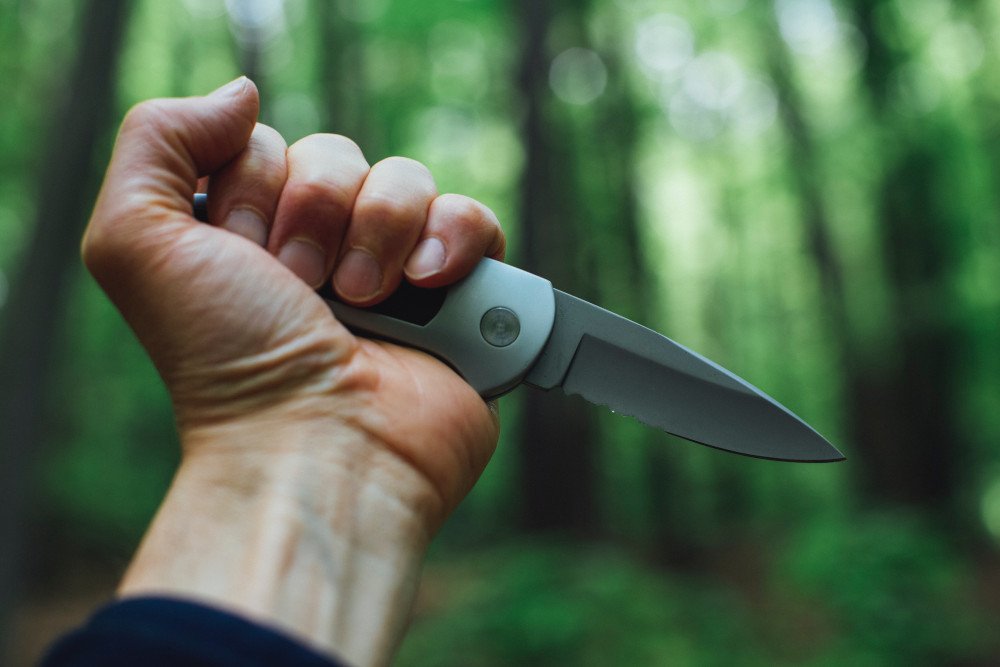In this article, we will explore the best types of survival knives and delve into their specific uses, equipping you with the knowledge needed to make an informed choice for your next outdoor adventure. A well-designed and versatile knife can serve a multitude of purposes in survival scenarios, making it an indispensable companion.
1. Fixed Blade Knife:
The fixed blade knife is a staple in survival gear due to its durability and strength. This type of knife is characterized by a solid, non-folding blade that extends into the handle. Its robust construction makes it suitable for heavy-duty tasks such as chopping wood, building shelters, and preparing food. The fixed blade knife excels in survival situations where reliability and versatility are paramount.
2. Folding Knife:
A folding knife, also known as a pocket knife, is highly portable and easy to carry, making it a popular choice for everyday carry (EDC) and survival scenarios alike. Its main advantage lies in its compactness, as it can be safely folded and stowed away when not in use. Folding knives often feature a locking mechanism that secures the blade in an open position, providing increased safety and stability during tasks such as cutting ropes, opening cans, or performing delicate tasks like dressing small game.
3. Multi-Tool:
While not solely a knife, multi-tools are incredibly useful for survival situations. These compact devices typically incorporate several tools, including pliers, screwdrivers, saws, and of course, a knife blade. Multi-tools offer versatility and convenience, allowing you to tackle a wide range of tasks. Whether you need to fix equipment, cut through materials, or perform basic repairs, a multi-tool provides a comprehensive solution.
4. Machete:
When dealing with dense vegetation, a machete is the go-to tool. This long, broad-bladed implement is designed for clearing paths, hacking through thick brush, and even light chopping. Its length provides leverage and allows for efficient cutting, making it an essential tool for navigating the wilderness. Additionally, a machete can be used for basic campsite construction and food preparation, making it a versatile option for survivalists and outdoor enthusiasts.
5. Bushcraft Knife:
Specifically designed for bushcraft and wilderness survival, a bushcraft knife is characterized by a sturdy, fixed blade and a handle that provides excellent grip even in wet conditions. This knife excels at tasks such as carving, notching, batoning (splitting wood), and general woodcraft. With its well-balanced design, a bushcraft knife becomes an extension of your hand, allowing you to perform intricate tasks with precision and efficiency.
6. Skinning Knife:
For hunters or those relying on hunting for sustenance in survival situations, a skinning knife is an invaluable tool. Its narrow and curved blade is designed for the delicate task of removing an animal’s hide. The sharp, pointed tip allows for precise cuts without damaging the underlying meat. A skinning knife ensures efficiency during the field dressing process, enabling you to make the most of your catch.
Conclusion:
When it comes to survival, having the right tools can make all the difference, and a reliable knife is a must-have in any survival kit. The types of knives mentioned above, including the fixed blade knife, folding knife, multi-tool, machete, bushcraft knife, and skinning knife, each offer unique advantages and cater to different survival needs. By understanding the specific uses of each knife type, you can select the one(s) that align with your requirements and increase your chances of thriving in the great outdoors. Remember, always prioritize safety, proper maintenance, and responsible use when it comes to selecting a survival knife, consider factors such as blade material, handle construction, overall size, and weight. High-quality stainless steel blades are preferred for their durability and resistance to corrosion, while ergonomic handles with textured grips enhance control and reduce fatigue during prolonged use.
Regardless of the type of knife you choose, proper maintenance is crucial. Keep your knife clean and dry, and regularly sharpen the blade to ensure optimal performance. Additionally, familiarize yourself with local regulations and safety guidelines regarding knife usage in your area.
Remember, a knife is only as useful as the skills you possess. Take the time to learn basic knife handling techniques, such as proper grip, safe cutting methods, and sharpening skills. Consider taking wilderness survival courses or seeking guidance from experienced outdoorsmen to enhance your proficiency.
In conclusion, the best types of knives for survival encompass a range of options designed to meet various needs. Whether you prefer the robustness of a fixed blade knife, the portability of a folding knife, or the versatility of a multi-tool, each knife has its place in your survival toolkit. Assess your specific requirements and activities, and choose a knife that aligns with your needs.
Remember, a survival knife is not just a tool but a lifeline in challenging situations. It is a symbol of self-reliance and preparedness. So, equip yourself with a reliable and well-suited survival knife, master your skills, and embark on your outdoor adventures with confidence, knowing that you have the right tool to tackle whatever challenges come your way.
Stay safe, be responsible, and embrace the spirit of survival preparedness. Your knife will be an invaluable ally in your quest for self-sufficiency and wilderness exploration.

Comments